We either have instincts to avoid bees or have learned from a painful bite to stay clear of bees, but do bumble bees sting? Are bumble bees the large fuzzy bees or are those honey bees? Do bumble bees make honey too? Killer bees sound dangerous for sure, but are bumble bees dangerous? Let’s find out!
What are bumble bees?
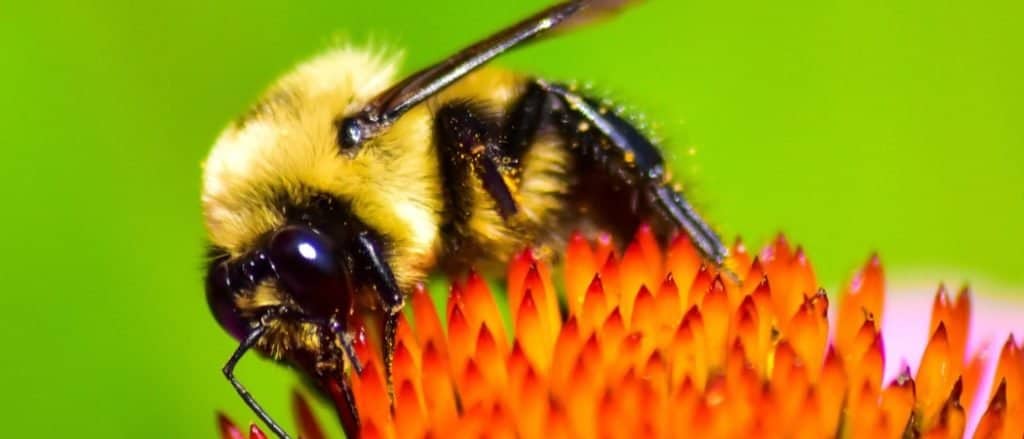
Bumble bees are plump, hairy bees about an inch long.
©amypat45/Shutterstock.com
Bumble bees are one of 250 bees in the genus Bombus. These bees are easy to recognize because they are the oval pompom-shaped fuzzy yellow bees. They are plump and have the characteristic yellow and black stripes with four wings and a stinger on the end. On their back, they have four small wings that have puzzled scientists on how they are capable of flight. But bees can fly and are quite adept and changing direction, hovering and flying distances to find nectar. Bumble bees also have a long proboscis near their mouth that they use to lap up nectar from flowers. Bumble bees, like honey bees, live in large social groups with a queen bee in charge.
Are bumble bees dangerous?
Yes, bumble bees are dangerous because they sting. The venom released from a bumble bee is harmful to humans. It can cause pain, swelling, itching and redness at the sting site. If a person is allergic to the bee sting they will have a more severe reaction and will need immediate medical attention.
Unlike honey bees that can only sting once, bumble bees don’t have stingers that detach and can sting multiple times. We’ll discuss their sting in more detail below.
Do bumble bees attack people?
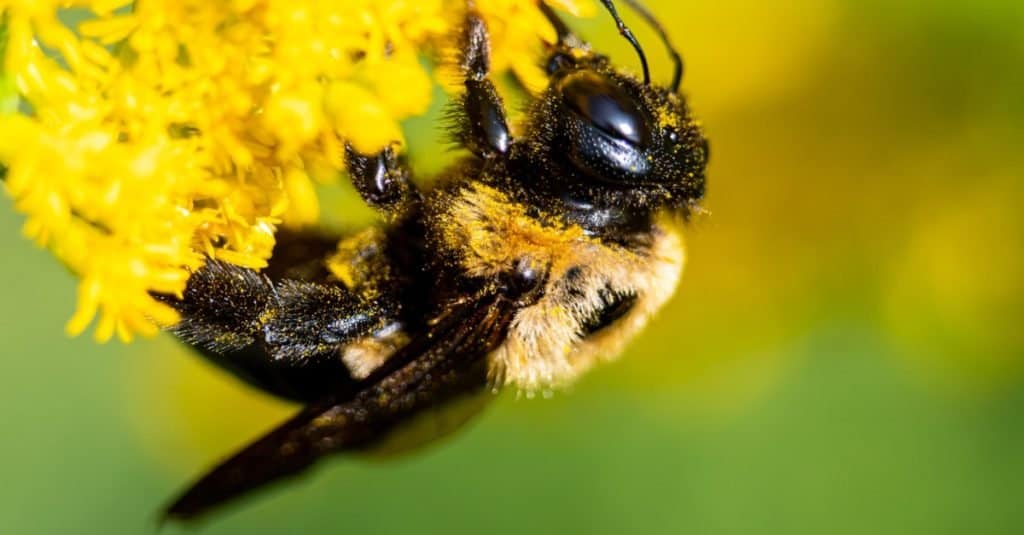
Bumble bees are not aggressive and will not attack people but they can sting in self-defense.
©Brier Mitchell/Shutterstock.com
Bumble bees do not attack people, they sting only in cases when they feel threatened or their hives are at risk. They are not aggressive and prefer to go about their day without bothering anyone. However if people are in their space or cross paths, they can sting causing instant sharp burning pain. Bumble bees can sting more than once and do not die after they sting you. Honey bees are the common bees that can only sting once.
Do bumble bees sting?
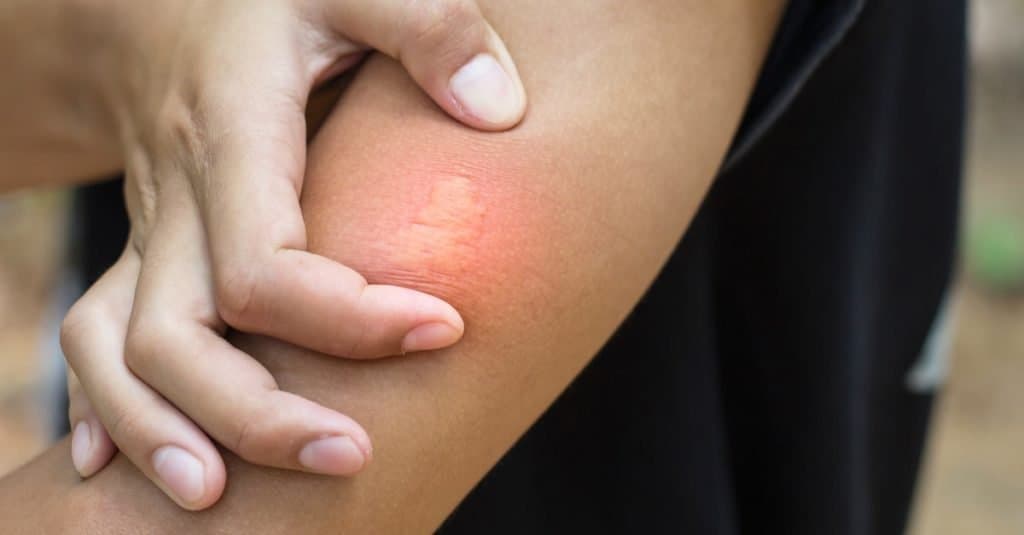
Bumble bee stings do hurt and cause redness and swelling. Bumble bees can sting more than once, unlike honey bees that can only sting once.
©WIRACHAIPHOTO/Shutterstock.com
Yes, bumble bees do sting. They have a stinger at their end that stays attached so they can sting multiple times, but typically only sting once and try to get away. Bumble bee stings are painful but typically the pain and itching goes away in a day or two. Severe reactions can cause increased swelling over a number of days and continued pain and itching. Did you know that only the female bees have stingers? Male bumble bees do not have stingers.
What are bumble bee stingers like?
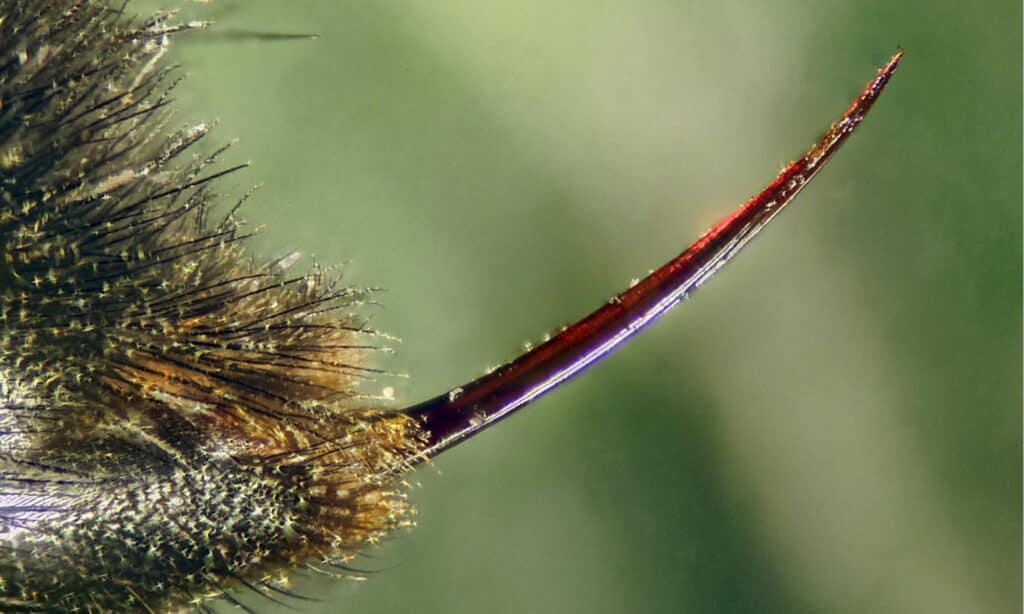
Bumble bees can sting multiple times with their stingers.
©Frank Reiser/Shutterstock.com
Bumble bee stingers are straight and narrow, like a sewing needle, and can be used to sting multiple times. Honey bees, on the other hand, have a barbed stinger that gets lodged into a person’s skin and ripped from the bee. These stingers may need to be removed from you skin by gently scraping your fingernail or using a credit card to try to slide it out. Do not use a tweezers because it can squeeze and release more venom.
Are people allergic to bumble bees?
Some people are allergic to bees and can have a dangerous reaction. The World Health Organization says that only 0.4% of the population of people is allergic to bee stings. According to the Mayo Clinic the signs of an anaphylaxis reaction include:
- Skin reactions, including hives and itching and flushed or pale skin
- Difficulty breathing
- Swelling of the throat and tongue
- A weak, rapid pulse
- Nausea, vomiting or diarrhea
- Dizziness or fainting
- Loss of consciousness
If any of these symptoms show up you should call 911 and seek immediate medical attention.
How many people get bit by bumble bees a year?
There is an estimated 220,000 visits to the emergency room each year due to bee, wasp and hornet stings, including bumble bees.
How many people die from bumble bees a year?
According to the CDC, in the United States there is an average of 62 deaths per year from hornet, wasp and bee stings. That is more than tenfold the number of annual deaths from snake bites in the United States, so this is a relatively large number. Interestingly, 80% of the people who died from stings were male. Between the years 2000-2017 there were a total of 1,109 deaths.
Are bumble bees dangerous to pets?

If a dog goes sniffing around flowers they could get stung on the nose. Be sure to carefully watch your pet for a reaction if they have been stung.
©DragoNika/Shutterstock.com
Yes, bees can sting your pet. Dogs can chase bees and try to eat them, obviously annoying the bee which might make it sting the dog. Dogs can also follow a bee back to its hive and get in big trouble if they disturb the whole hive.
Honey bees are more likely to swarm than bumble bees, but bumble bees can sting more than once and will if a dog keeps bothering them. Bee stings in pets can be minor or they can cause the same kind of anaphylactic reaction as it does in humans. If your pet gets stung be sure to watch them carefully, especially if they were stung on the nose, mouth, or neck. Usually, a reaction will present itself within 20 minutes, but be on guard for a few hours to be sure your pet is safe.
What if my dog eats a bumble bee?
If your dog eats a bumble bee it will probably be fine (your dog, not so much for the bee). The dog could get stung while it is munching on the bee and it could cause a painful sore inside the dog’s mouth. If it were to get stung in the throat, you would have to watch to be sure its throat does not swell up. In most cases, dogs are most at risk of being stung before they would eat one. Once ingested the bee typically dies right away.
Another danger from eating bees is if the bees have been exposed to poison in an effort to exterminate them. Your dog could become sick from the poison from eating affected bees, especially if they eat multiple exposed bees. Call your vet if you have any concerns.
What should you do if you come across a bumble bee?
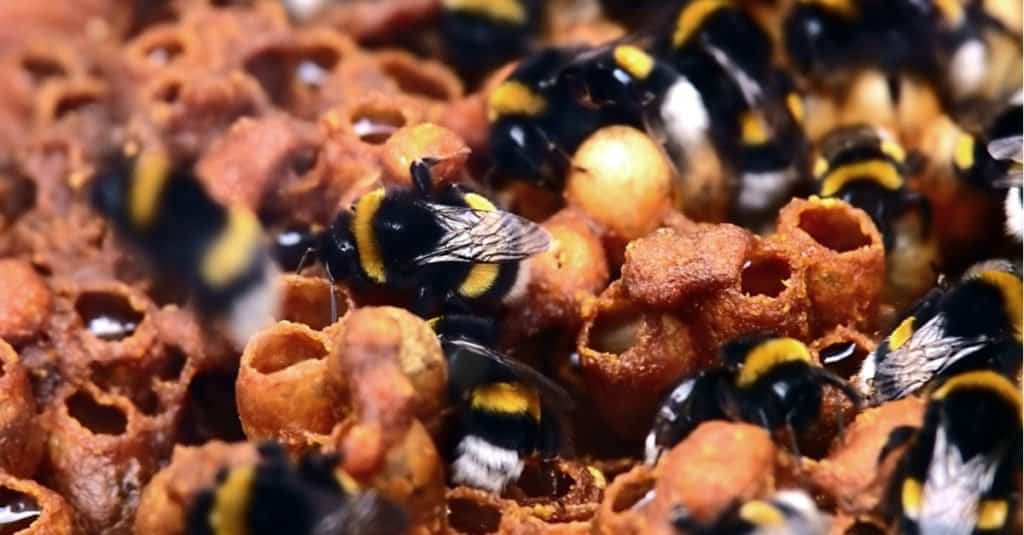
Keep your distance from a bee hive so you don’t bother them and cause them to swarm. Bumble bees do live together in hives.
©dwphotos/Shutterstock.com
If you come across a bee, or group of bees, you should remain calm and not do anything to startle them. They will typically leave humans alone. Be cautious around gardens and flowers as this is where they tend to live. Bumble bees live close to the ground or in the ground so always watch your step!
Are there really “killer bees”?
There actually are “killer bees”. The Africanized honey bee is known as the killer bee and is not native to the United States. However, in 1985 the first group of Africanized honey bees was discovered in the US in San Joaquin Valley of California. These bees are dangerous because they are aggressive, will attack, and attack in large swarms. They don’t give up either and can chase people for a quarter-mile. There have been 1,000 deaths related to Africanized honey bees. Unfortunately, these bees are spreading along the SW border of the US, moving north.
Another problem with Africanized honey bees is they can raid and take over entire honey bee colonies. They find and kill the queen and take over which disrupts the current honey-making for farmers and producers.
So bumble bees are dangerous, but Africanized honey bees are even more dangerous!
The photo featured at the top of this post is © Edgar Rene Ruiz Lopez/Shutterstock.com
Thank you for reading! Have some feedback for us? Contact the AZ Animals editorial team.






